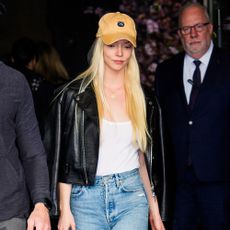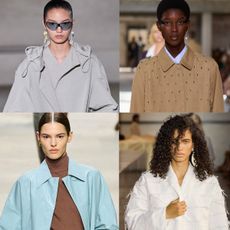Instagram Is Supposed to Showcase Individuality—so Why Is It Creating a Uniform?
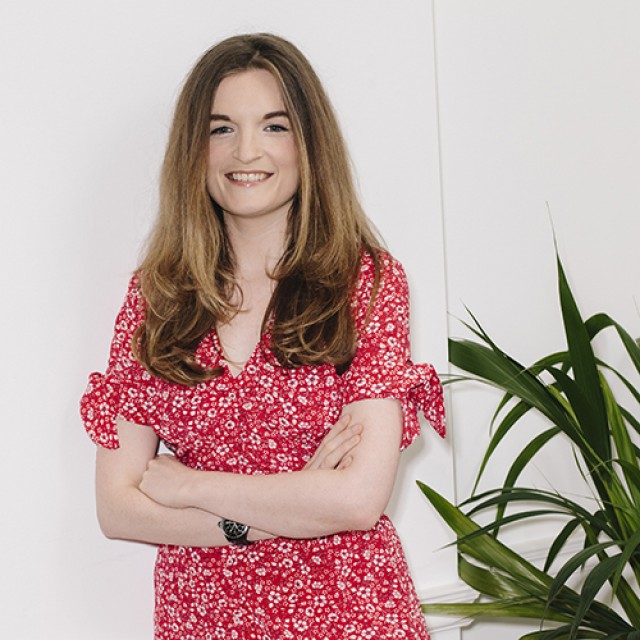
Instagram is a space where you can post anything you like. However, in order to get more likes, we are all doing the exact same things, posing in front of the same pink walls and eating the same photogenic eggs. Last month influencer Ellie of Slip Into Style took to her Stories to share her frustration that in order to have commercial success as a fashion blogger, you have to adopt a uniform and temper your personal style.
If you look on the #OOTD (outfit of the day) hashtag on Instagram, the most popular nine squares always seem to feature identical images and outfits. The last time I looked, there were three pairs of white Gucci trainers, a close-up of a grey jumper and not one outfit that showcased out-of-the-ordinary personal style. Detail shots of basics—whether that’s a checked blazer, an oversized jumper or a white T-shirt tucked into jeans—not only generate likes but also see the most conversions into sales.
One influencer told me recently that on the shopping app LiketoKnow.it, users like to see (usually headless) close-ups on products because they can visualise themselves wearing the item and so are then more likely to buy it for themselves. And more people are going to be able to visualise themselves in a white T-shirt or a basic pair of jeans than anything else, earning the influencer the most money. If you’re turning your outfit posts into a business, then it’s not hard to see how personal style can quickly become muted for commercial success.

Related: 11 Steps to Finding Your Personal Style and Sticking to It
“They not only wear the same styles, they also use the same filters and the same poses because they know that that’s what is going to work,” Ellie says to Who What Wear UK. “It’s all starting to feel more and more manufactured with less room to express your individuality. It seems like there is a formula, a sort of miracle recipe to success on Instagram, and everybody at some point is going to try to re-create it because ultimately they want their share of the cake. I remember this one fashion blogger whom I used to praise for her originality and impeccable personal style. You could tell she put thought and effort into creating her looks all the while making it seem effortless—a true source of inspiration. Then one day out of the blue, her account shifted from featuring incredibly stylish and fashion-forward looks to taking cute shots of her pert derrière in denim cutoffs.”
Instagram has become a business for many, so it is only natural that what people wear has become commercialized. “I do not even blame bloggers who go down the same route as her, because once they realize what truly works on Instagram and that there is money to be made and juicy contracts to be signed, they will all jump on the bandwagon, and rightfully so,” says Ellie. “But our obsession with numbers is doing fashion on Instagram a great disservice as it truly hinders creativity.”
Related: Summer 2018 Fashion Trends: The Only Looks You Need to Know
Instagram fosters the rise of buzzy cult brands and products, whether that’s a Ganni banana T-shirt or a Wandler bag. It once was seen as a faux pas to wear the same thing as someone else, but now at fashion week, street style stars have no problem all carrying the exact same handbag and adopting a uniform. The Scandinavian set of influencers, such as Emili Sindlev and Jeanette Madsen, prove, however, that it is possible to all wear the same jumper and still stay true to your own personal style.
“The newfound success of the Scandinavian It girls with their colorful, mixed-matched, sometimes man-repelling style are a testament to the fact that people do want to see things that break the mold sartorially speaking,” says Ellie. And they give inspiration for how you can wear the T-shirt you see all over Instagram in your own way.
Of course you can’t talk about the rise of a fashion uniform without mentioning the street style circuit. Historically, street style was an authentic reflection of what people were wearing, but now it has turned into a performance with many dressing to be photographed and—just like with the like-generating grey jumpers and Gucci trainers—wearing the things that they know will be well received. “There is a pair of Céline boots that I’ve seen at least once every single day of the fashion month,” street style photographer Romina Introini of Romilux tells me.
Personal style can be sidestepped in this arena, with women wearing “dad” trainers or a plastic Chanel bucket hat, not because it will slot into their wardrobe and be worn for the next decade but because it is bait for the crowds of cameras waiting outside the shows. “There are so many photographers working in street style who are only trained to look for certain labels or trends, and it’s easy to play into that,” says Fashionista.com deputy editor Tyler McCall.

One of the overarching problems here is that the street style images we see are often of the same women, which this season led to a big question over inclusivity. As The Cut put it with the headline, “Street style is killing itself with its narrow focus on thin white women.”
“It’s not just a question of the photographers; it’s a problem from the top down,” says McCall. “Why aren’t more brands trying to dress diverse body types and women? Why aren’t more publications hiring more diverse editors? That being said, I do think by and large the photographers could do more to find a more diverse group of women to shoot. Representation really matters, and while it’s easy to dismiss not seeing diversity on a runway or in an editorial, it’s harder to understand why there isn’t more diversity in street style when it’s meant to reflect the street.“
“It can be damaging and take a huge toll on your sense of self-worth and self-confidence because it perpetuates the idea that only one type of woman is desirable or deserves to be seen or shown to the public,” says Ellie. “The problem is not the photographers themselves: How can they photograph diverse body types when there’s only one particular body type that gets invited to shows over and over? I believe the responsibility here is collective.”

The power that Instagram has, however, unlike commissioned street style, is that you are in control of the images you want to see and who you follow. If you look past the most popular images all showing the same fashion uniform, you can find the people who are doing something a little different or have a style that resonates with your own, whether that involves grey jumpers and white T-shirts or not.
-
 10 Years Later, These Looks From Toteme's Creative Director Are Still So Chic
10 Years Later, These Looks From Toteme's Creative Director Are Still So ChicThe magic of elevated basics.
By Jennifer Camp Forbes
-
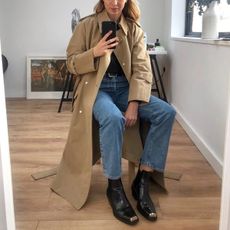 You Only Need 9 Pieces for a Complete Spring Capsule Wardrobe
You Only Need 9 Pieces for a Complete Spring Capsule WardrobeGood news: You probably already own them.
By Maxine Eggenberger
-
 5 Leather Jacket Styles That Will Never Get Old
5 Leather Jacket Styles That Will Never Get OldThey were a big deal on the fall/winter 2022 runways.
By Elinor Block
-
 6 Editor-Approved Airport Outfits That'll Double Your Chances of an Upgrade
6 Editor-Approved Airport Outfits That'll Double Your Chances of an UpgradeA masterclass in looking chic (and comfy).
By Maxine Eggenberger
-
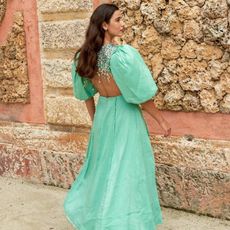 I'm a Fashion Editor—These Are the 29 Best Wedding Guest Dresses of the Season
I'm a Fashion Editor—These Are the 29 Best Wedding Guest Dresses of the SeasonTrust me.
By Maxine Eggenberger
-
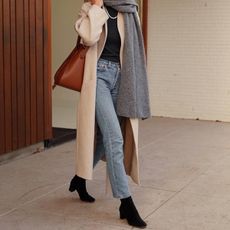 27 Easy Outfit Ideas I'm Wearing on Rotation This Spring
27 Easy Outfit Ideas I'm Wearing on Rotation This SpringEt voilà.
By Hannah Almassi
-
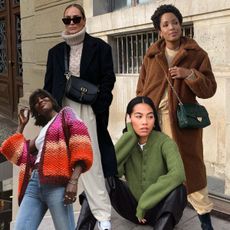 The Winter Outfits We're Ready to Start Wearing Now
The Winter Outfits We're Ready to Start Wearing NowWe're actually glad it's cold.
By Emma Spedding
-
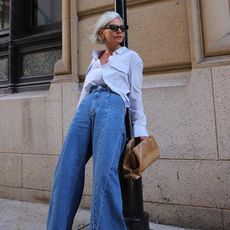 The 50-Something Instagrammer With Better Style Than All of Us Put Together
The 50-Something Instagrammer With Better Style Than All of Us Put TogetherSo much Bottega.
By Emma Spedding
